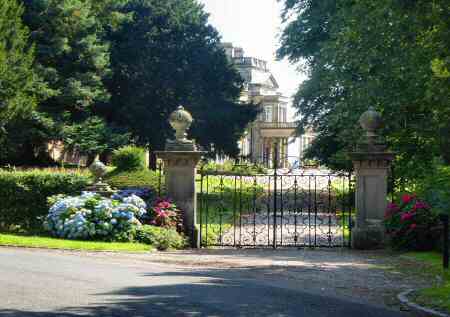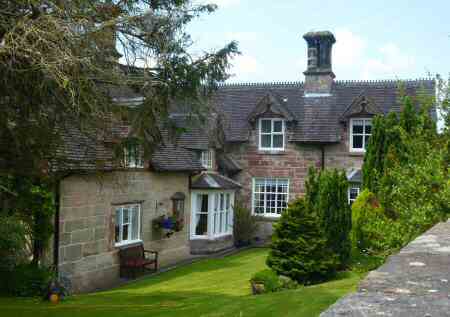A to Z HIGHLIGHTS OF EAST STAFFORDSHIRE - PART 3
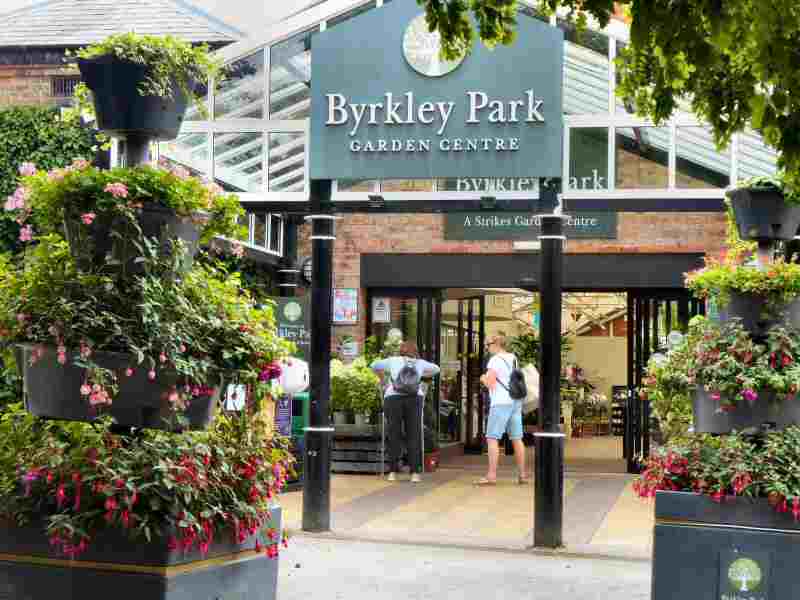
BYRKLEY PARK GARDEN CENTRE
Byrkley Park was originally part of Needwood Forest, owned by the Berkeley Family of Berkeley Castle in Gloucestershire. In 1267, Thomas de Berkeley built a hunting lodge in the park. It changed hands several times before, in 1850, it was rented to Michael Thomas Bass, of the Burton brewing family. On his death, the estate passed to his son Hamar Alfred Bass who rebuilt the house and developed a successful racing horse stud within the extensive grounds. His son carried on the racing tradition, but following his death in 1952, the estate was sold and the main house demolished.
In 1986, the Byrkley Park Garden Centre was opened. It is located in the Victorian walled kitchen garden of the old lodge. Over the years, it has been developed extensively in its beautiful setting. There is a large aquatics centre and a children’s play area. Inside there is a well-stocked shop with a wide range of products and a popular café/restaurant.
CALWICH
Calwich is a small scattered settlement that includes the hamlet of Northwood. It is best known for its abbey which dates from the 12th century. Little remains of the abbey following the Dissolution of the Monasteries, or of the hall built to replace it. Apart from the stable block in a ruinous state, there is a fishing temple by the lake. In the early 18th century when Bernard Granville was the owner he rebuilt the hall and entertained some celebrated guests there. These included Erasmus Darwin, Anna Seward, Rousseau and George Friedrich Handel the composer. He was a frequent visitor and it is claimed he composed part of his Water Music suite at the hall. There are several footpaths through the park well worth exploring.
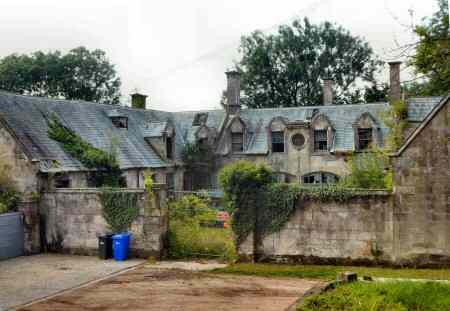
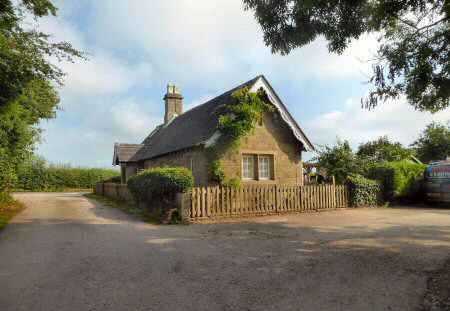
CLAYMILLS PUMPING STATION
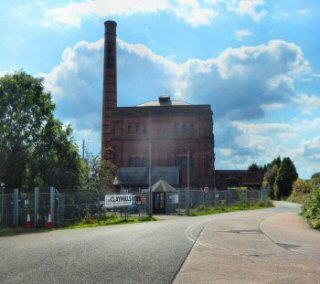
Claymills Pumping Station is an excellent example of Victorian engineering. It dates back to 1885 when its development brought much-needed improvements to local sewerage handling, when most people in Burton still used buckets as a toilet. English Heritage have described it as ‘the most complete site of its kind in the UK’. The station and its ancillary buildings have been preserved as a museum. A varied programme of talks is provided, guided tours and hands-on experience.
The Visitor Centre has a display of artefacts and information about the site and the sewage treatment process. Children can discover what it is like to start a steam engine and the younger ones will enjoy dressing up and playing with the Lego provided. There is also often the chance to ride on a model traction engine. Refreshments are available and there is plenty of parking. Details of steaming days can be found on the station website, with a full breakdown of open-day events.
Severn Trent Water’s modern-day sewage works are located next to the pumping station.
CROXDEN ABBEY
Croxden Abbey is Staffordshire’s finest Monastic ruin and is situated in a beautiful setting near the River Dove. It was founded in 1176 for the Cistercian Order. The monks are said to have ministered to King John on his deathbed when he died not far from the abbey. At its peak, it was home to 70 Cistercian monks. After the Dissolution of the Monasteries in 1538, it was converted into a farm. Today, it is in the hands of English Heritage and is an impressive place to visit with its towering fragments of the 13th-century church, infirmary and 14th-century abbot’s lodging. Further information is available on the website, including opening details.
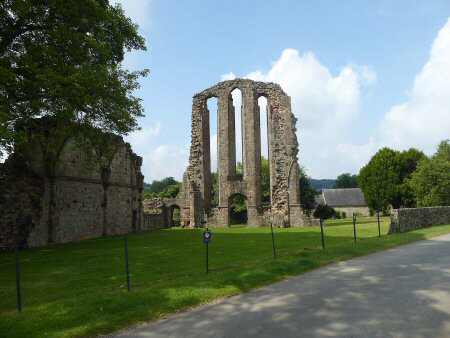
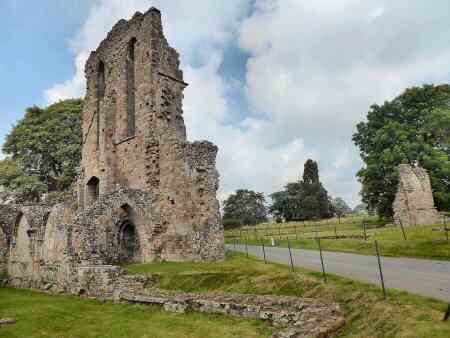
DENSTONE
Denstone is a compact village of considerable character in an attractive setting with the Churnet Valley and the impressive Weaver Hills to the north. There are 30 listed buildings in the parish, which have been added to sympathetically by more modern housing. The parish was formed in 1894 and includes the village of Denstone plus the four hamlets of Doveleys, Prestwood, Quixhill and Stubwood.
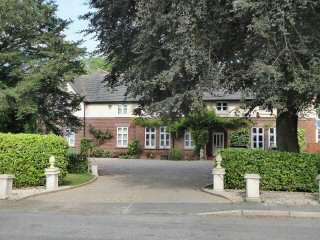
Although Denstone goes back to the Norman era, it only really started to develop after the arrival of Sir Thomas Percival Heywood in 1840. He was a wealthy banker and had the church, school (now a private residence) and church room built. But he is best remembered for founding Denstone College, in 1873, only a short walk from the village centre. A more recent arrival, in 1950, was JCB which has grown into a global company and their headquarters remain within easy walking distance of the village. Denstone is a tidy village that has won numerous Best Kept Village competitions. The village hall and public house are well-used along with other amenities, which include a bowling green and tennis court. A greenway for walking, cycling and horse-riding, along the former railway line from Denstone to Oakamoor.
On the Village’s eastern edge Denstone Hall Farm Shop was awarded the prize of ‘Best Large Farm Shop Retailer in the UK’ in 2019. It had been opened twelve years previously by Rupert and Emma Evans after they gave up their corporate careers in London to return to Emma’s family farm. A former milking parlour was converted into a small farm shop and café. Since then, the business has expanded considerably and now has a large 100-seat café overlooking the beautiful Staffordshire countryside.
DRAYCOTT IN THE CLAY
Draycott in the Clay is located in the countryside just north of the National Forest boundary. It has more facilities than some of its neighbours with the village having two churches, a village shop, a community Post Office, public houses, St Augustine’s C of E First School and a play area. The Annual Agriculture and Horticulture Show in August is an important date in the village event calendar.
There is a collection of old traction and stationary engines at Klondyke Mill Preservation Centre. Events are held there from time to time which is very popular with classic vehicle enthusiasts and visitors who enjoy the opportunity to see rare vintage traction engines, road rollers and steam engines. Later in the year, a special bonfire night attracts both locals and visitors.

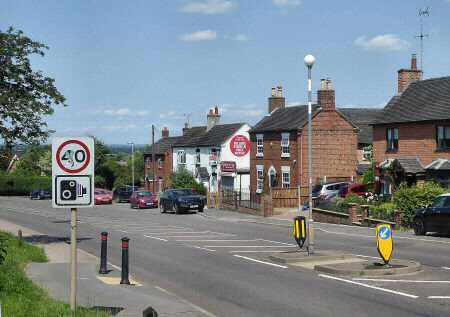
DUNSTALL
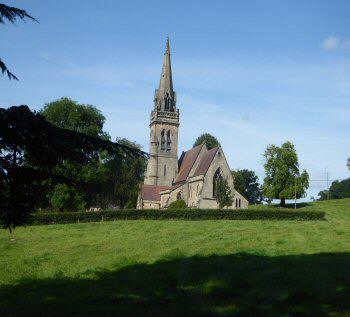
Dunstall is a small, attractive village comprising a few cottages and farms, a mid-Victorian church and a hall. The hall is a Grade II* listed building. Records go back to a house on the site in 1145 that was probably a hunting lodge in the Royal Forest of Needwood. There have been several owners of the Grade II* listed building, including Fawaz Al-Hasawi the former owner of Nottingham Forest Football Club. Within the grounds of the estate is a Deer Park and Cricket Ground.
The village cricket club which plays in Deer Park, one of the most picturesque grounds in the Midlands. It is well known for its cricket tournaments and has hosted several international cricketers, including Derek Randall and Devon Malcolm who both played for England and Phil Simmons and Jimmy Adams who played for the West Indies. In 1990, the club played in the Village Cup Final against Goatacre, a Wiltshire village cricket club, at Lords. The final was lit up by an astonishing innings by Goatacre batsman, Kevin Iles, who scored one hundred in only 39 balls, in what was a very tight match.
ELLASTONE
Ellastone is an attractive elongated village divided by the B5032 into Upper and Lower Ellastone. The latter is on the floor of the River Dove that separates Derbyshire from Staffordshire. The former climbs up towards the impressive-looking Weaver Hills.
The village features as ‘Hayslope’ in George Eliot’s (the pen name of Mary Ann Evans), famous novel Adam Bede. Published in 1859, the novel has remained in print ever since and is regularly used in university studies of 19th-century English literature. Adam Bede Cottage still survives in Ellastone, the former home of the Evans family.
Before the First World War, Ellastone was largely self-supporting with a good level of employment in three nearby country houses and agriculture. Since then, two of the country houses are no more and fewer people are engaged in agriculture. Despite the village being mainly occupied by commuters and retirees, several small industries are tucked away unobtrusively in out-of-the-way corners.
There are several listed buildings in the village. Ellastone Old Hall, formerly the Bromley Arms public house, is stylish and probably dates from the 17th century. The Duncombe Arms is a short distance away. In the centre of the village, St Peter’s Church is a beautiful Grade II* listed building with over 850 years of history. Calwich Chapel has exhibits showing the links of the Church with the ancient Augustinian Priory. Check the website for access details.
Ellastone Bridge over the River Dove was an important crossing point during the Second World War when it was guarded by two pill-boxes, one on each bank. On close inspection, both are still visible.
